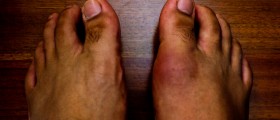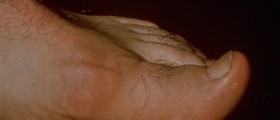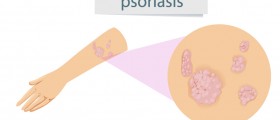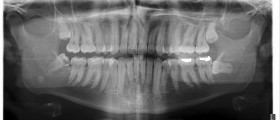
Swollen ankles and possible culprits
When fluids begin to build up and accumulate in the anklesunnaturally, the inflammation that results in swelling is the most obvious signthat indicates it. People can face this problem in every phase of their lifedue to various causes. It will cause problems in walking, pain in ankles,headaches, increased urination and perhaps even gaining of weight, which is whyis should be treated before further problems emerge. For an adequate treatment,it is necessary to diagnose the exact cause, which might not always be so easy,because the list of possible culprits is rather long. However, usually gout,arthritis of the ankle, ankle tendonitis, the use of laxatives, and conditionssuch as pregnancy are behind the problem in question.
In cases of gout, the crystals of uric acid accumulate inthe joints, which further cause inflammation.Ankle arthritis, which stands for the condition characterizedby wear and tear of the joint that is positioned between the shinbone and anklebone,is particularly typical of those who suffer from rheumatoid arthritis or whoare overweight.Ankle tendonitis is more typical of those who are physicallyactive, and it can be caused by any injury to the tendon positioned on theinside of the ankle, which is involved in raising of the foot arch.The fact is that laxatives can also cause swelling in theankles, particularly when used excessively, and the same goes for birth controlpills and diuretics.Pregnancy causes several changes to the female body, andsince it is not uncommon that hypertension occurs, swollen ankles mightindicate the presence of this problem as well.Aside from these causes, problemswith circulation, cellulitis, peripheral edema, sprain of the ankle, fracture,or stress fracture can also result in swollen ankles, as well as infections,bites of insects, medications such as steroids, estrogens and antidepressants.
Treatment of swollen ankles
The treatment of this issue is related to the cause becausein some cases, it is enough to treat and cure the underlying condition. However,there are certain steps that can be taken in order to relieve the symptoms, nomatter what the cause of the problem is. For example, it is recommended to keepthe leg elevated and to use leg wedges, if necessary, because this will help indecreasing the pain and discomfort. Ice packs can be used in cases of anklesprains, but only for the initial 48 hours, and they should not be kept formore than 20 minutes. Anti-inflammatory and pain relieving medications should beused only if necessary, and strenuous activities should be avoided for some time.



-Symptoms,-Diagnosis,-Treatment_f_280x120.jpg)













Your thoughts on this
Loading...